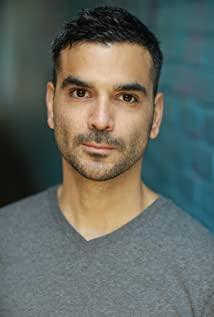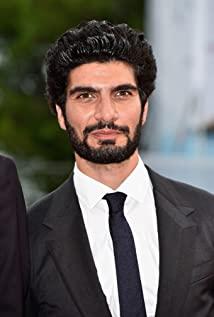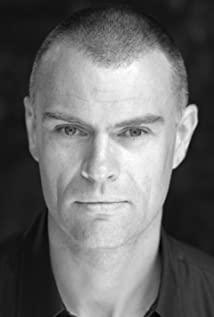How did Maya discover the whereabouts of bin Laden? The first 45 minutes of the film mainly tells how to obtain this key information, and "enhanced interrogation" (enhanced interrogation) played a key role. What is "enhanced interrogation"? After the movie opened from a black field for more than 1 minute with countless distress calls from the World Trade Center on 9/11, it jumped to two years later. The first visible shot took place in Pakistan, a black site of the CIA, that is, a secret interrogation site. The beard-and-bearded agent Dan said to the prisoner, "I control you, Amar, you are in my hands. In his hand." Amal also has a beard, but it is not as dense as Dan. He has messy hair and blood stains around his eyes. "Look at me," Dan said, and Amal glanced at him and immediately looked away. Dan suddenly raised his volume and yelled at Amal, "If you don't look at me when I speak, I will make you suffer." After a series of shoving, the two assistants beside Dan began to beat Amal. We can hear the wailing, and the "intensified interrogation" begins here. Some people in the United States use a more direct term, which is called "torture" (torture).
Next, Amal's two wrists were tied up by ropes hanging from the ceiling. He stayed alone in a dark room, his body showed a W shape---not a regular W, more like a twisted W that was compressed in the horizontal direction. Fortunately, his feet finally fell to the ground. Maya witnessed the whole process on the spot, but we could not see her shiny golden red hair. She wore a black headgear, showing only two eyes. She can accept what just happened. After she was tortured for the first time to extract a confession, she no longer needed to wear a headgear to accept a series of things that happened later.
The CIA holds the key evidence of Amal, who used "Western Union" to provide $5,000 to the 9/11 hijackers. Dan offered blankets and food as a temptation, and hoped that Amal would provide more information about the construction company Saudi Group, with which the Bin Laden family has close ties. Dan did not do what he wanted, and Amal could only continue to suffer. The two big guys threw him down on the mattress fiercely, and Maya watched, frowning. Dan asked her to fetch some water, and the famous "waterboarding" (waterboarding) began. Amal's head was covered by a piece of felt, Dan poured it on with the water that Maya handed over, and at the same time asked loudly. If you can provide an e-mail at the time, I will stop immediately. What plans do you have, when was the last time you saw bin Laden? Maya shook her head and said that it was okay and continued to do it, but she did not look directly at the waterboarding process. Her gaze either turned away or closed her eyes altogether. Amal coughed violently and gasped. In the process of waterboarding, the prisoner's feelings are close to drowning. In addition to the pain caused by lack of oxygen, it may also cause sustained consequences such as bone fractures and psychological trauma. After the torture, Dan Amar said, "Brother, in the end everyone will collapse, biology is so."
Film torture in second place in the same location, Amar down to the crooked His W-shaped seated on the chair, Dan handed him juice and food, and the audience could see how hunger and thirsty Amal was. Dan said, “If you lie, you will definitely suffer.” He wanted to know the background of the human bomb perpetrators that happened not long ago. The answer provided by Amal is that he doesn’t know. In front of Maya, Dan put Amal into a dilemma of being naked, and humiliating prisoners by exposing private parts of his body in front of women is also part of the CIA's enhanced interrogation methods. Amal asked for help, and Maya replied, "You can help yourself as long as you tell the truth." Amal was quickly put on a dog cover and forced to crawl on the ground like an animal. He started leaking information, Sunday or Monday. Dan said, "Incomplete information can only be regarded as lying." He and his assistant stuffed Amal into a wooden box. His body could not be stretched, like a shepherd dog being squeezed into a chicken coop. inside.
More than a year later, Maya and Dan’s third encounter with Amar was more friendly and the food was plentiful, but they still alluded to torture. Maya mentioned that Amal had suffered short-term memory loss as a result of long-term sleep deprivation. After being unable to sleep for 96 hours, Amal confessed to her brother's name to help the CIA frustrate a conspiracy of a terrorist attack. She hoped that Amal would continue on the right track. Although this is just a scheme of the Mayans, Amal did not really confess, but in fact, sleep deprivation is also one of the CIA's intensified interrogation methods. While chewing on figs, Amal gave Maya and Dan a long list of new names. For the CIA agents who have been hungry for a long time, Amal has finally become a fountain of intelligence. It was during this meeting that Amal mentioned the name of Bin Laden’s messenger for the first time: Abu Ahmed.
Immediately afterwards, Maya watched several video clips of past interrogations, which involved torture methods similar to those encountered by Amal.
The next step is Poland, another "black spot" of the CIA. Maya wears a wig to cover her red hair. She hopes to learn more about Abu Ahmed's background and whereabouts. There is no torture here, what interests me is the choice of location. The subtitles in the film indicate "Black Spots of the Central Intelligence Agency, Gdansk, Poland", and the scene is a pier by the sea. In my memory, Gdansk, Poland is a very special place. In 1980, Walesa, an electrician at the local shipyard, created the first independent trade union "Solidarity" in a socialist country in Eastern Europe. The upheaval planted the seeds. The CIA chose such a historic location to engage in interrogation activities that did not completely conform to the spirit of the rule of law advocated by the United States. It was somewhat ironic.
The next interrogation took place in a detention center in Pakistan, with Maya wearing a headscarf facing the al-Qaeda funding provider. There is no direct expression of torture here, but it was mentioned indirectly in the dialogue between Maya and the prisoner. The prisoner said, "I don't want to suffer any more, what do you ask, what do I answer." He provided more information about bin Laden's messenger Abu Ahmed.
At a US military base in Afghanistan, a leading al-Qaeda figure was treated with forced vomiting and fist hits. He argued, "You can't force me to tell you things that I don't know." Maya warned, "You should Realize that this is not an ordinary prison. Your own behavior determines how you will be treated. Your life will be very uncomfortable until you provide the information I need." She touched her colleague next to her, and the top figure once again He was served by boxing and waterboarding, but he still did not succumb. Maya then hoped that Dan could help, but at this time Dan refused to continue the torture. He decided to leave Afghanistan and return to the United States. He couldn't bear to see hundreds of naked prisoners in front of him every day. He needed a normal life. After torture, it is not only the interrogated person who suffers sustained mental trauma, but the person who extracts a confession will also become the victim. Like his prisoners, they will experience anxiety, cognitive deficits, and social disorders, and other psychological problems. Academic research results in this area are not uncommon. In addition, Dan reminded Maya to be cautious when dealing with prisoners. The political climate in Washington is changing. When the inspection team comes, you should not be the last person to hold a dog cover. In other words, in case the US government pursues torture responsibility, you maya don't become a victim.
The director Catherine Bigelow was not shooting a documentary, she just shot a feature film in a nearly news gathering way. The credits say that the film is based on first-hand narratives of real events. As a work of art, American audiences generally agree that "The Hunt for Bin Laden" is very successful. It has been nominated for an Oscar for Best Picture. However, many people, especially liberals, question the large-scale footage of torture. They believe that the film’s approach to finding drama elements from torture is inappropriate, and that part of the achievement of the final capture of Osama bin Laden is attributed to the intelligence obtained by torture is a beautification of illegal behavior. The explanation of Bigelow and the screenwriter is that they themselves did not deliberately overpower their personal position on the question of intensified interrogation. In addition to strengthening the interrogation, the film also uses the corresponding length to show other intelligence collection measures, including high-tech means such as satellites and computers, as well as traditional methods such as on-site operations by agents.
The debate in American society on intensified interrogation has been around for some years. The first issue is that neither American law nor moral responsibility allows the use of torture to extract confessions. But in the special circumstances of the 9/11 tragedy and the United States suffering huge losses, can it be slightly accommodating? Can we innovate beyond the traditional methods of torture that have been forbidden to improve work efficiency? The CIA's intensified interrogation took place mainly when Bush was president, and there was no consensus within the team. One of the main advocates was Vice President Cheney. According to a survey in the book "The Dark Side: The Inside Story of How The War on Terror Turned into a War on American Ideals," published in 2008 by author Jane Mayer, shortly after 9/11 From bondage, beating, sexual humiliation, sleep deprivation to waterboarding, all these intensive interrogation methods have begun to be used for terrorist suspects. The pressure from the White House is the main reason why the CIA dares to take the risk of breaking the law. They need to provide intelligence for the United States to attack al-Qaeda and Osama bin Laden as soon as possible. In the beginning, the CIA only hired external contractual personnel and chose places outside the control of the US law to complete the interrogation, which was called black spots. Later, it was gradually institutionalized, and detailed operating rules were issued. The torture extorted confessions was covered by established legal procedures. After watching the movie, Jane Meyer criticized the handling of torture in the New Yorker magazine. She said that during the actual interrogation, when the CIA contractor stuffed the prisoner into a wooden box, even people from the brother unit FBI next to him warned that it was illegal to do so, should be condemned, and would not achieve the goal.
Whether the intensified interrogation can achieve the goal is the second key issue in American society. In the movie, torture played an important role in the breakdown of willpower and the final confession of Amal and others. If this is the case, the CIA should actually outsource the interrogation task to a police station in China as early as possible, saving money and effort, so bin Laden can be discovered at least 5 years in advance. In fact, many people who have a lot of inside information about the description in the movie have come forward to deny it, including several heavyweight federal senators. They said that the acquisition of key information did not rely on intensive interrogation methods, but the basis for these people's conclusions is difficult to say with 100% accuracy. The Republican presidential candidate in 2008, Arizona Senator John McCain was captured in the Vietnam War and tortured by the Viet Cong. His views are especially valuable for reference. Shortly after bin Laden was arrested and killed in May 2011, McCain wrote in the Washington Post that from personal experience, torturing prisoners can sometimes obtain valuable information, but often it also brings false information. Because during the torture process, the interrogator will say all the things that the extortionist wants to hear—regardless of true or false, as long as the pain can be relieved. Regarding the disagreements of American society on intensified interrogation methods, McCain believes that torture such as waterboarding should of course be prohibited. He emphasized that this is even more a moral controversy, because the United States should be a role model in respect of human rights. At the same time, Senator McCain supports the exemption from accountability for the implementation of enhanced interrogators because they are serving the country and also showing terrorists the determination of the United States. The pressure on Dan and Maya's hearts may be relieved by this.
View more about Zero Dark Thirty reviews











